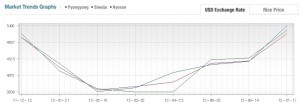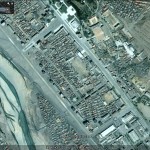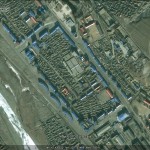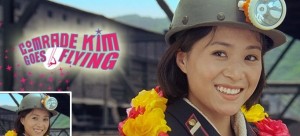
Pictured above (Daily NK): The 2012 Won / US$1 exchange rate up to 2012-7-13.
According to data provided by the Daily NK, the won/dollar exchange rate fell (the won appreciated relative to the dollar) nearly 28.4% from 5,100W/US$1 in December 2011 (a high following Kim Jong-il’s death) to approximately 3,650W/US$1 in February 2012. Since February, however, the won has showed a steady depreciation and the exchange rate has risen 48% to 5,400W/US$1 as of July 13.
So as I sit here eating breakfast I am wondering what caused these swings in the exchange rate?
Firstly, what was behind the dramatic fall in the exchange rate (and food prices) in January and Febraury? A simple answer may be a decrease in uncertainty and risk. Following Kim Jong-il’s death, the DPRK did not repeat the mistakes made after the passing of Kim Il-sung. For the most part markets remained open and “regular” activities of the state were highlighted in the domestic media and reported to contacts overseas. It is also possible that Chinese intervention, particularly in the form of food assistance and trade facilitation, could have played a role.
Secondly, does this mean that the increase in the exchange rate and food prices is a result of growing uncertainty? I am not convinced. It is beyond the scope of a blog post to tease this kind of information out, but here are some other things to think about: Economic uncertainty (pending policy changes, inflationary public finance), balance of trade (fall in net exports/rise in net imports, aid), capital flows (investment, aid, remittances), weather (drought/floods), “lean times” leading up to the fall harvest.
Some of these things matter more than others but it is important to keep in mind that the North Korean won is worth about as much today as it was when Kim Jong-il died. Since the won/US$ exchange rate is highly correlated with the price of rice (a fact that can be visually confirmed on the Daily NK web page) this means that food prices are also pretty high at the moment.
UPDATE 1 (2012-8-16): The Institute for Far Eastern Studies (IFES) has also posted a few words on this topic:
Rice Prices and Exchange Rate on the Rise
2012-8-16
Since Kim Jong Un’s ascent to power, the rice prices and exchange rates are on the rise. Despite Kim Jong Un’s proclaimed priority in elevating the quality of life for the North Korean people, uncertainty are prevalent in the country as Kim Jong Un has yet to meet the expectations of the people for economic revitalization or reform.
Compared to last year, the prices of rice last September that ranged 2,400 to 2,500 KPW per 1 kg, has jumped to 4,500 KPW in December right after the death of Kim Jong Il and exchange rates that averaged 2,800 to 3,000 KPW against one USD soared to 5,000 KPW. Although the prices have stabilized since then, the prices are climbing once again, as the price of rice in February at 3,100 KPW has gone up to 3,600 KPW/kg and exchange rate of 3,700 KPW per dollar jumped to 4,800 KPW in June.
In some places, the price of rice is reported to be above the 5,000 KPW range. According to Daily NK, an internet news outlet, the prices of rice in major cities like Pyongyang, Haesan, and Sinuiju has steadily increased for the last four months.
The price of rice in Pyongyang was 2,600 KPW/kg in April but it has slowly climbed to 3,000 KPW in June 5 to 4,900 KPW in end of June and is 5,300 KPW as of July 13. In Sinuiju and Haesan, the rice prices in April were around 2,600 to 2,700 KPW but soared to 4,300 to 5,000 KPW in July 13.
Exchange rates are also unstable as exchange rate to one US dollar that averaged 3,700 KPW in March soared to 4,200 KPW in April 25, 4,400 KPW in July 14 to 5,400 KPW by July 13.
Seasonal factors are also adding to the price fluctuations. May to August is normally a difficult time for North Korea with frequent famine. Combined with extreme drought conditions in June, accelerating inflation, and people’s rising apprehension about the economy, some rice wholesalers are not withholding the sales of rice.
The rising rice prices and exchange rate is expected to continue for the time being. Flood damages and other natural disasters and the trauma from the failure of last currency revaluation in November 2009 are factors adding to the price escalation.




